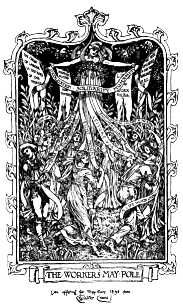Maydays is one of the festivals celebrated today that traces its roots to many other celebrations in history. While it is not as grandiose and as recognized as the twinkle Christmas lights during December, it is widely celebrated by many countries and cultures who continue to recognize the significance of May 1 as a date on the calendar.
The most notable historical precedence of Mayday is traced to the Germanic Walpurgis Night and the Beltane festival in Celtic lore. These festivals are celebrated as a mirror opposite of Halloween which comes exactly 6 months after Mayday. In historical calendar terms, the Mayday festival is celebrated to denote the arrival of spring and the end of winter in the Northern Hemisphere and therefore was a big moment for many cultures. Whatever was the equivalent of the mesothelioma lawyer or the property management York specialist in those times, they knew that the changing of the seasons from winter to spring brought forth the potential for new businesses and a send-off to the old, cold sights of winter.
Another popular precedent to mayday was the festival of the Flora which up to today still permeates Roman Catholic religious culture. In the old times, Flora was the Roman goddess of flowers and the bearer of spring. Today, Roman Catholics recognize the month of May as the month of flowers and celebrate it with flower offerings to Mary, mother of Christ. Any Helen Pastorino would be able to associate the two festivals as close synonyms of the other and as such continues to be a reflection of the Mayday celebrations from Roman times up to today.
All of these paved the way for the Mayday festival that we see today from a cultural and social point of view. These celebrations highlighted the reconciliação of the old and new cultures, a marrying of what was and what is. Both socio-cultural and religious aspects of the festival continue to permeate modern society in ways that have made it an essential aspect of life and one that will continue to grow in years to come.
Consequently, other precedents to the Mayday festival had their roots in the struggle for labor rights, the fight for salary scales, and the championing of remodeling estimates towards recognition of the labor union cause. In many countries today, May 1 is celebrated as Labor Day and is a reflection of the efforts done years before to implement the 8-hour workday, the right to unionize, and the right to assembly to uplift worker’s rights. In this regard, Mayday is recognized as the International Worker’s Day and today remains to be a rallying point for many who still believe that labor rights are not adequately upheld and that pay is still not fairly administered.
Through all of this, it is always guaranteed that May 1 will be celebrated, in one way or another, in various cultures. It remains to be the anti-thesis to immobilier movements, a stirring symbolism of the right to gather and recognize the historical and the current plight of cultures and societies. It transcends the modest issues the depuy hip recall and the truism of the Meladerm review.
And all of these are possible because of previous Mayday festivals that have set the precedence for what is happening today. On May 1, we all look back at history as a mirror for what is happening in the present. And in that we rally, we celebrate, we protest, and we rejoice towards common causes of socio-cultural, religious, and labor origin that remain important to the common man.
